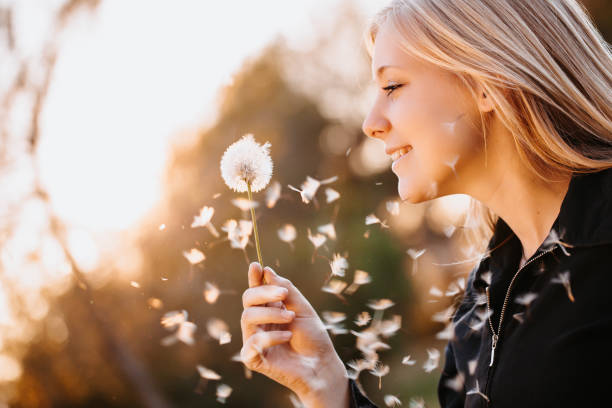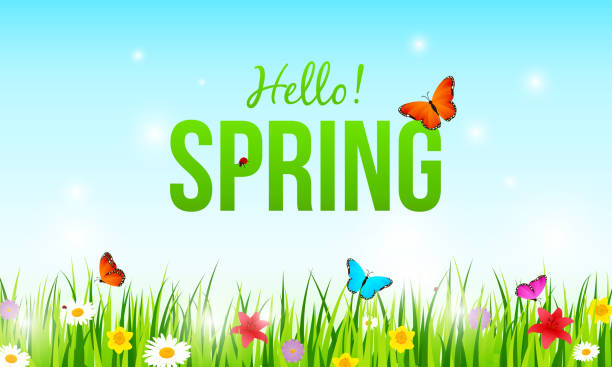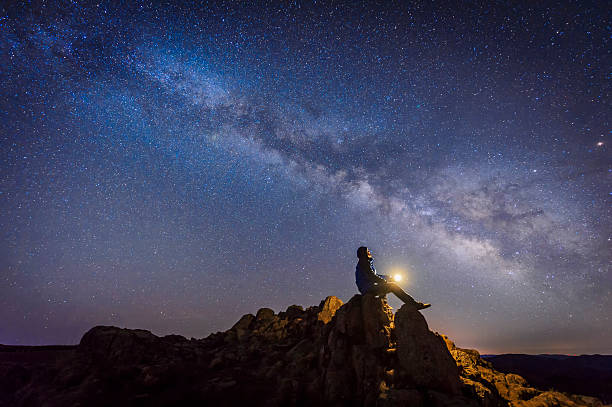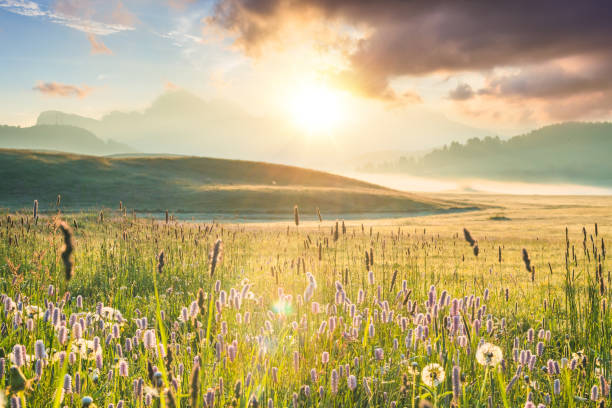How to Describe Spring Season in Writing (08 Best Tips)
How to Describe Spring Season in Writing
How to Describe Spring Season in Writing: Describing the spring season in writing is an enchanting endeavor, where words become the brushstrokes on the canvas of the reader’s imagination.
Spring is a season of renewal, a time when the world awakens from its wintry slumber, and nature unfolds a vibrant tapestry of colors and scents.
To capture the essence of spring in writing is to embark on a journey that taps into the senses, emotions, and the ever-changing landscape.
It’s a season that beckons writers to explore the visual splendor of blooming flowers, the symphony of birdsong, the fragrance of blossoms on the breeze, and the rejuvenating touch of a warm sunbeam.
In the following exploration, we’ll delve into the art of descriptive writing, using metaphors, similes, and vivid language to convey the unique spirit of spring, a season that has inspired poets, authors, and artists for centuries.
Whether you’re crafting poetry, prose, or simply sharing the beauty of this season with others, this guide will help you evoke the essence of spring in all its glory.
How to Describe Spring Season in Writing
To describe spring season in writing, focus on capturing the sensory experiences and visual imagery associated with this season. Here’s a step by step process on How to Describe Spring Season in Writing:
Visual Imagery:
Spring is a time of rebirth and renewal. Describe the landscape with words like “blossoming,” “vibrant,” and “lush.” Mention the return of green leaves, colorful flowers, and the gradual transformation of barren trees into a tapestry of hues.
Sensory Details:
Engage the reader’s senses. Talk about the gentle warmth of the sun on the skin, the aroma of blooming flowers, and the sight of butterflies and bees pollinating. Describe the clear blue skies and the vibrant, fresh green of the grass.
Sounds of Nature:
Mention the melodic songs of birds returning from migration. The chirping of sparrows and the cooing of doves in the early morning. The rustling of leaves and the soft hum of bees.
Renewed Life:
Convey the sense of life returning to the world. Discuss animals coming out of hibernation, newborn animals, and the anticipation of longer, sunlit days.
Symbolism:
Use metaphors and symbolism to evoke emotions. For example, you can compare the blooming flowers to smiles, and the spring showers to tears of joy.
Change and Transition:
Highlight the transition from the cold, dormant winter to the lively, colorful spring. Mention the thawing of icy streams and the emergence of buds on trees.
Activities and Festivals:
Spring is a season for various outdoor activities and festivals. Mention activities like picnics, gardening, or kite flying, and festivals like Easter and Holi.
Overall Mood:
Convey the overall mood of hope, renewal, and the sense of a fresh start that spring brings.
Remember to use descriptive language and metaphors to paint a vivid picture of spring for your readers, allowing them to feel the beauty and vitality of the season through your words.

The Senses and Spring
In the enchanting embrace of spring, our senses become symphonies of nature’s grand overture. As we cast our gaze upon a canvas of blossoms, the world transforms into a tapestry of vibrant colors, where each petal tells a story of rebirth.
The melodies of chirping birds compose a living sonnet, their tunes resonating through the air like whispered secrets.
Inhale deeply, and you’ll catch whispers of fragrant confessions as the earth offers up its perfumed secrets, while the gentle caress of a warm breeze upon your skin reminds you that life, like spring, is tender and fleeting.
Spring is the season that reminds us to embrace the sensory poetry of existence, to let our senses bloom with every petal and resonate with the song of life.
Visual Descriptions
Visual descriptions in the realm of spring are a feast for the eyes, a jubilant celebration of nature’s artistry. The world awakens from its winter slumber with an explosion of colors.
As you wander through meadows and gardens, you’ll encounter a mesmerizing spectacle of blossoming flowers, each one a painter’s stroke on a canvas of green.
The landscape is adorned with a lush, emerald robe as new leaves unfurl, and the azure sky stretches overhead like a vast, unblemished canvas.
The radiant sunshine bathes everything in a warm, golden glow, revealing intricate details that might have been hidden in the shadows of winter.
Spring is the season that beckons us to open our eyes wide and behold the intricate, awe-inspiring beauty that unfurls with every passing day.
The Changing Landscape
In the transition from winter’s hushed slumber to spring’s exuberant awakening, the landscape undergoes a metamorphic ballet.
It’s a poetic transformation where dormant branches become canvases for delicate blossoms, and the once icy grip of winter yields to the gentle embrace of a burgeoning green paradise.
Snow and frost melt away, nurturing the earth, giving rise to murmuring streams and rivers that sing of rebirth.
The entire world appears to exhale, and even the most stoic mountains seem to soften as they shed their wintry coats.
Spring’s changing landscape is nature’s masterpiece, a testament to the earth’s eternal cycle of renewal, reminding us that every season is a chance for transformation and growth.
Transformation of the environment
The transformation of the environment in spring is nothing short of magical. It’s a vivid reminder that the natural world is a perpetual chameleon, adapting with grace to the shifting seasons.
As the days lengthen and temperatures rise, the landscape sheds its wintry pallor, and a palpable sense of life stirs in the once-dormant earth.
Trees, seemingly lifeless just weeks ago, suddenly burst forth with vibrant green leaves, forming a lush canopy overhead.
Flowers that had patiently bided their time begin to unfurl their petals, splashing the scene with a kaleidoscope of colors.
The once-frozen streams and lakes thaw, flowing with newfound vigor, their waters glistening like liquid crystal under the warmth of the sun.
The transformation of the environment in spring is a captivating spectacle, reminding us that nature is the ultimate artist, eternally painting and repainting the masterpiece that is our world.
Human Interaction with Spring
In the embrace of spring, human interaction with the world transforms into a lively dance of vitality and connection.
We venture outdoors, our spirits lifted by the promise of warmer days. Picnics unfurl on emerald blankets, friends and families gathering to savor the sun-kissed moments.
Gardeners, their hands caked in soil, plant the seeds of their dreams, cultivating a tangible sense of hope in every carefully tended row.
Spring cleaning rituals, like a cathartic metamorphosis, infuse our homes with fresh air and renewed purpose. There’s an unspoken understanding that we, too, are part of the grand symphony of rebirth and renewal, as we bask in the revitalizing embrace of spring and join hands with nature in a shared celebration of life.
Outdoor activities
Outdoor activities in the spring season are a glorious escape into nature’s rejuvenating embrace. As the world awakens from its winter slumber, there’s a palpable sense of anticipation in the air.
Parks and trails beckon with open arms, inviting hikers, joggers, and cyclists to explore the revitalized landscapes, now adorned with lush greenery and blossoming wildflowers.
Picnics become al fresco feasts, where the tantalizing aromas of freshly prepared meals mingle with the fragrant breezes, and laughter dances on the wind.
Gardens become sanctuaries for those with green thumbs, offering an opportunity to dig into the earth and sow the seeds of new beginnings.
In the spirit of spring’s renewal, these outdoor activities provide a respite from the confines of indoor life, allowing us to embrace the world with open hearts and open skies as our backdrop.

Metaphorical Language
Metaphorical language is the shimmering tapestry upon which we paint our most profound thoughts and emotions, and in the context of spring, it’s a palette of boundless possibilities.
Spring unfurls like a metaphor for youth, as the world awakens from a long, wintry slumber, reminding us that every dawn brings a fresh start.
It’s a symbol of hope, a reminder that even in life’s darkest winters, there’s the promise of a brighter, more vibrant tomorrow.
Metaphors and similes, like the delicate petals of a flower, allow us to weave intricate narratives, likening the unfurling leaves to an artist’s brushstrokes on the canvas of life or the first rays of sunshine to golden spears piercing the morning mist.
Metaphorical language in the realm of spring is a tapestry of words that transports us beyond the ordinary and into the extraordinary, where nature itself becomes the ultimate source of inspiration.
Comparing spring to other elements or emotions
Comparing spring to other elements or emotions is like translating the symphony of nature into the language of the soul.
Spring is often likened to youth, an era of renewal and endless possibilities, where the world is reborn from its wintry cocoon, much like a child’s eyes shimmer with innocence and curiosity.
It’s a symbol of hope, a beacon of light after the long night of winter, akin to the way hope can pierce through the darkest despair.
Spring can also be seen as a metaphor for resilience, mirroring the way life persists, even in the face of adversity.
In the grand lexicon of emotions and elements, spring is the season of emergence, reminding us that from every frozen slumber, a vibrant and fervent awakening is possible.
The Impact of Seasonal Changes
The impact of seasonal changes is a profound reminder that our world is a living, breathing entity, and each season plays its part in the grand narrative of existence.
As spring gracefully emerges from the frosty cocoon of winter, it ushers in a symphony of transformation. The unpredictable climate dances with the whims of nature, teasing us with bursts of sunshine followed by the gentle embrace of spring rains.
This fluidity imparts a sense of resilience, for just as nature adapts to its ever-changing script, so do we. Yet, beyond the weather, spring’s impact ripples through ecosystems, orchestrating the life cycles of flora and fauna.
The world teems with a vibrancy that radiates hope, reflecting the interconnectedness of all life. Spring reminds us that, even in our human realm, the shifting seasons serve as poignant metaphors for change, evolution, and the enduring power of nature’s artistry.
Climate and weather descriptions
In the realm of spring, climate and weather descriptions become a kaleidoscope of emotions painted across the sky.
This season embodies a paradox, where the weather can change with the capriciousness of a poet’s muse. Sunshine may break through the morning mist like a revelation, casting warmth upon our world, or clouds may gather, weeping gentle spring rain.
It’s a season where sudden gusts of wind can be as playful as childhood laughter, while the unexpected chill in the air serves as a reminder of winter’s lingering shadow.
Spring’s climatic whimsy keeps us on our toes, but it’s precisely this unpredictability that imbues each day with a sense of adventure.
The weather, like the human spirit, is a dynamic force in the tapestry of spring, where nature’s caprices give life its unique flavor and keep us ever-attuned to the beauty of change.
Personal Connection and Perspective
Personal connection and perspective in the realm of spring are the threads that weave our individual stories into the broader narrative of the season.
For some, spring may be a nostalgic embrace, a reminder of childhood play in sun-drenched meadows. To others, it could be a symbol of resilience, mirroring their own journeys of growth and renewal.
The way we perceive and connect with spring is as diverse as the colors in a field of wildflowers. It’s the season that transcends objective beauty, for it’s not only what we see but how we see it that matters.
Spring is a canvas on which our memories, emotions, and dreams are painted, reminding us that the world, with all its vibrancy, is a reflection of the inner landscapes of our hearts.
In these moments of personal connection and perspective, spring becomes not just a season, but a mirror to our souls, a reminder of the ever-evolving stories we write upon the canvas of our lives.

How different people perceive and experience spring
Spring, like a multifaceted gem, reveals itself in various hues through the eyes of different beholders. For some, it’s a season of rekindling romance, when the world blossoms alongside their love stories.
Gardeners view it as a canvas, an opportunity to nurture and coax life from the earth’s embrace. Children greet spring with unrestrained joy, for it promises the return of outdoor adventures and the sweetness of ice cream.
Poets and artists find inspiration in its vivid landscapes, while to others, it may signify a reprieve from winter’s melancholy or a symbol of hope and renewal.
Each perception is a unique prism through which spring’s essence is filtered, and the beauty lies in the kaleidoscope of experiences it offers.
Spring, like life itself, wears different masks and resonates with countless voices, reminding us that diversity of experience is a testament to the richness of our shared human existence.
Frequently asked question about How to Describe Spring Season in Writing
What is the key to effectively describing spring in writing?
The key to describing spring effectively is to capture the sensory experiences and visual imagery associated with the season, using descriptive language and vivid details.
What sensory details should I include when describing spring in my writing?
Include sensory details such as the sights of blossoming flowers and lush landscapes, the warmth of the sun, the sounds of birds and nature, and the scents of blooming flowers.
How can I use metaphors and symbolism when describing spring in my writing?
You can compare blooming flowers to smiles, spring showers to tears of joy, and use various metaphors to convey the emotions and symbolism associated with the season.
What emotions should I aim to evoke when describing spring in my writing?
Aim to evoke emotions of hope, renewal, and a fresh start. Spring is often associated with positive feelings and the rejuvenation of nature.
Are there any specific activities or festivals I should mention when describing spring?
Yes, you can mention outdoor activities like picnics, gardening, and festivals such as Easter or Holi to add depth and cultural context to your description.
How can I effectively convey the transition from winter to spring in my writing?
To convey this transition, describe the thawing of icy streams, the emergence of buds on trees, and the awakening of life in the natural world.
What are some unique ways to make my writing about spring stand out?
Use unique and unexpected metaphors, incorporate local or personal experiences, and experiment with the pacing and structure of your writing to make it distinctive.
How can I engage the reader’s senses in my writing about spring?
Engage the reader’s senses by describing the feeling of the sun on the skin, the sounds of birdsong, the scent of blooming flowers, and the taste of fresh spring produce.
What role does nature play in a spring description?
Nature is central to a spring description. It’s the awakening of the natural world that defines spring, so be sure to include elements of nature in your writing.
Can I use alliteration and onomatopoeia to enhance my spring description?
Yes, using literary devices like alliteration (repetition of consonant sounds) and onomatopoeia (words that mimic sounds) can add a musical quality to your description and make it more engaging.
Conclusion
In the conclusion of How to Describe Spring Season in Writing, capturing the spirit of the spring season is both a poetic endeavor and a celebration of life’s cyclical beauty.
The essence of spring is found in the intricate details, the vibrant colors, and the awakening of the senses. Throughout this exploration, we’ve unveiled the magic of spring by invoking the visual, auditory, olfactory, and tactile elements that define it.
We’ve ventured into the metaphorical landscapes, where spring becomes a symbol of hope, resilience, and renewal.
We’ve felt the pulse of seasonal changes, the impact on the environment, and the profound influence on human interactions and emotions.
In the end, our journey through the language of spring teaches us that describing this season in writing is not merely about painting pictures with words but about inviting readers to partake in the very essence of life’s renewal.
With the tools provided in this guide, we encourage you to embrace the challenge of portraying the splendor of spring with vivid prose, poetic elegance, and the enduring wonder that this season bestows upon us all.







